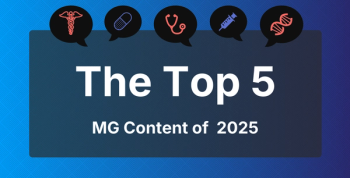
As ACA Enrollment Begins, What's Included in Some Short-Term Insurance Plans?
Open enrollment for the sixth season under the Affordable Care Act (ACA) begins today and lasts until December 15, and organizations like The Commonwealth Fund are highlighting resources to alert consumers to the differences between the various health insurance plans now available on the individual marketplaces.
Open enrollment for the sixth season under the Affordable Care Act (ACA) begins today and lasts until December 15, and organizations like
While plans that are ACA—compliant with full, nondiscriminatory coverage are still available, it has become more difficult for consumers to sort out their options, due to the lack of critical information contained in marketing materials from
The STLDHP insurance available now—and marketed aggressively under the ACA— is similar to what was sold pre-ACA, when plans could deny someone coverage for having a pre-existing condition, or exclude certain services. But the Trump administration has said that the
The authors
Even if the plans say they cover pre-existing conditions, they don’t cover everything, and there are caps on coverage.
One plan says it provides coverage for pre-existing conditions up to $25,000 to consumers who qualify, subject to a deductible and coinsurance.
The plans use applicant health histories to determine who gets coverage, even if illness hasn't struck yet.
One insurer the authors looked at uses a health questionnaire to “screen out applicants with symptoms of an illness or condition — even if not yet diagnosed or treated.”
The plans don’t cover the ACA’s 10 essential benefits.
- Prescription drugs: not covered by 3 insurers; excluded in some plans by the other 2 insurers.
- Maternity: not covered by any of the 5.
- Mental health: 3 insurers exclude coverage for mental health and substance use disorder services and 2 exclude tobacco cessation treatment.
- Future exclusions, undefined: Although the policy is not provided until after enrollment, the authors wrote that 1 of the insurers excludes “treatment, services or supplies not defined or specifically covered under the policy.”
The plans have dollar limits for specific services and overall total caps on coverage.
Before the ACA, health insurers could set a lifetime limit on covered benefits during any time spent in the plan. The short-term plans, which were originally intended to last 3 months under the ACA but can last for just short of 1 year and renewed for up to 3 years under the new rules put in place by the Trump administration, herald a return to dollar limits and overall caps. One brochure caps intensive care unit care at $1250 a day and $50 a day for doctor visits while in the hospital.
There’s no guarantee the coverage will be renewed.
Developing a new health condition while on the STLDHP could result in becoming ineligible to renew or purchase a second plan.
Newsletter
Stay ahead of policy, cost, and value—subscribe to AJMC for expert insights at the intersection of clinical care and health economics.







































